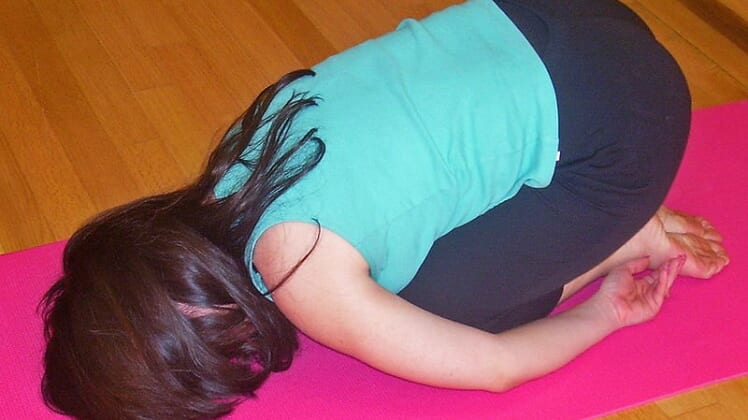
[bc_video video_id=”5510052022001″ account_id=”5374160583001″ player_id=”HJtnW6IQW”]
Yoga is a movement technique — a series of poses (called asanas) that emphasize stretching, attentive breathing, and relaxation. The poses are part of a spiritual discipline and belief system from India. The exercises promote physical and mental well-being; some improve flexibility and strength as well.
What is Iyengar yoga?
Iyengar yoga, developed by yoga master B.K.S. Iyengar more than 60 years ago, promotes strength, flexibility, endurance, and balance through coordinated breathing and poses that require precise body alignment. Like other types of yoga, it also encourages self-awareness through meditation. The difference is that Iyengar yoga focuses on physical methods to cultivate spirituality. For example, the poses, breathing, and meditation aren’t separate stages to achieve; they’re inseparable parts of the whole. The reasoning behind Iyengar yoga is that it’s impossible to do a pose correctly without strict concentration. Such deep concentration means you’re automatically in a meditative state, and rhythmic breathing follows from the effort of maintaining the pose. Also, depending on where you study, like a health club or a gym, for example, the focus will be more on the physical goals of yoga, rather than a state of higher consciousness.
Equipment like cushions, blankets, straps, and wooden blocks to help the less flexible also distinguishes Iyengar from other types of yoga. Although Iyengar incorporates the traditional postures, or asanas, that make up the broader category of hatha yoga, the cushions and other props revolutionized yoga by enabling everyone — even the elderly, sick, and disabled — to practice. Iyengar is still one of the most popular types of yoga taught today.
What’s the difference between Iyengar and other styles of yoga?
Different yoga styles all derive from the same source, hatha yoga, but each technique has a different emphasis. Some stress breathing, chanting, meditating, or moving fluidly from one position to another. Iyengar yoga emphasizes precise bodily alignment and the poses are generally held longer than in other styles of yoga. In Iyengar, you slowly move into a pose, hold it for a minute or so, and then rest for a few breaths before stretching into another.
Because of its slow pace, attention to detail, and use of props, Iyengar yoga can be especially good if you’re recovering from an injury. Just be sure to tell your instructor in advance about any injuries you have — especially back, shoulder, or knee problems — so that he can adjust the poses for you as necessary.
What are some typical poses?
In a beginning class, you’re likely to start with the following poses, or asanas:
Tadasana (Mountain Pose)
Although it looks simple, this pose is sometimes called the hardest pose in yoga. The goal is to distribute your weight evenly over both feet to encourage balance and elasticity in the spine.
Vrksasana (Tree Pose)
This pose tones leg muscles and promotes balance.
Trikonasana (Triangle Pose)
Triangle Pose strengthens leg muscles and ankles. It can also relieve back and neck pain, and get rid of stiffness in the hips.
Dandasana (Staff Pose)
In Dandasana the legs are very active, even though it looks like you’re just sitting there. This pose also benefits the stomach and kidneys.
Uttanasana (Standing Forward Bend)
This pose stretches the spine and tones the liver, spleen and kidneys. It can also ease a stomachache or menstrual cramps.
Don’t worry if you can’t reach the floor or stretch into the complete pose right away — that’s where the props come in handy. With practice, you’ll gain flexibility and need to use them less and less.
Do I need my own equipment?
Some people prefer to have their own mat, but most gyms or studios will provide blocks, blankets, straps and any other equipment you’ll need. If you plan to practice regularly at home, investing in a few inexpensive props might not be a bad idea, and will help you get the most out of your workout.
What should I wear?
Since yoga is performed barefoot, comfortable clothing, like a pair of leggings or a leotard, is really the only essential. You can realistically wear anything you choose as long as it doesn’t restrict your movement or cause discomfort.
Is there anything I should be careful about?
In the beginning especially, take it easy: Skill levels are mixed in many classes, and just because the person next to you has their knee by their ear doesn’t mean you have to do the same. Listen to your own body and don’t push yourself beyond your limits. You should feel some good stretches in yoga, but if you ever feel pain going into or holding a pose, come out of it right away even if it’s before the instructor says to. Also, if you haven’t been active in a while, be sure to let your doctor know you’re starting a new exercise program.
How can I find an Iyengar instructor?
The Iyengar Yoga National Association of the United States (IYNAUS) has a list of certified Iyengar teachers across the country. Unlike other styles of yoga, Iyengar yoga has a strict certification procedure and instructors must have taught for at least two years in order to apply for testing. To find a credentialed instructor in your area, visit IYNAUS’s Web site (http://iynaus.org) or call (800) 889-YOGA.
Keep in mind, however, that there are no official requirements to teach yoga. Certification is completely voluntary, and an uncertified instructor doesn’t reflect a lack of knowledge or expertise. An excellent teacher who has been practicing for many years may have no formal credentials. The best way to find an instructor you enjoy working with may be to try out several different classes. A good instructor will be active and attentive, and should walk around the class to observe and adjust students’ postures individually.
References
Iyengar Yoga by Ramamani Iyengar Memorial Yoga Institute, Pune, India.
By Jen Wieczorek
Holistic Medicine Health Library Copyright ©2017 LimeHealth. All Rights Reserved.
